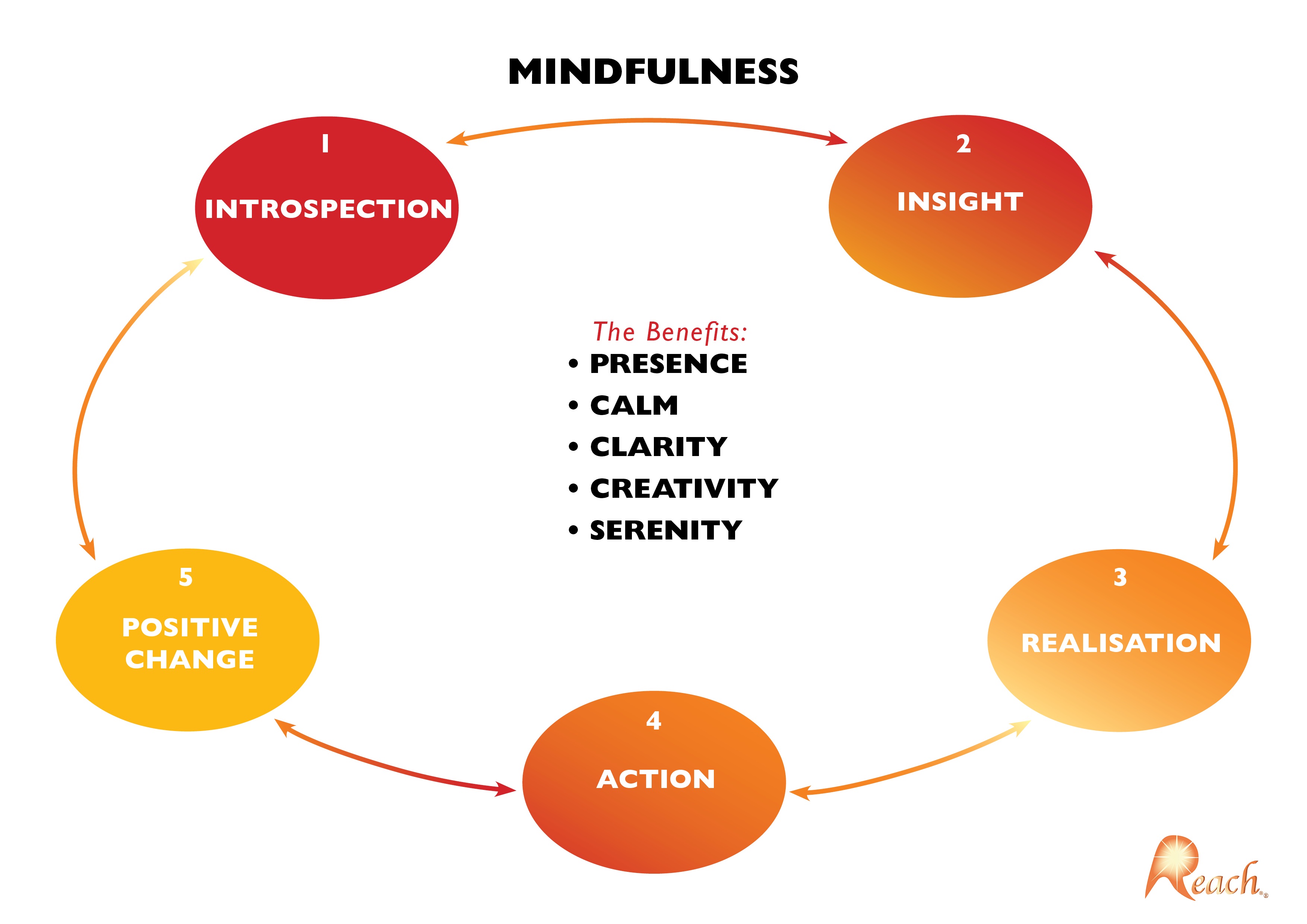
It’s the middle of the day on a Monday and you’re thinking about how great the weekend is going to be. In order to get there, you have to work through Tuesday, Wednesday, Thursday, and lastly, Friday. You’re at your dream job, and you don’t know why you’re dreading it today. What could change the way you’re processing your work right now? Could mindfulness be the solution?
We can get overwhelmed by running on autopilot and find the need to re-center ourselves. Mindfulness is a practice where we focus our thoughts on here and now, rather than the past or the future. It involves being aware of our emotions, thoughts, and surroundings without judgement. The opposite of aloof, being aware is focusing our attention on processing what we are receiving through our thoughts and perception. When we stare at our computer screens for too long then look away, mindfulness is like the readjustment to look away, fix our focus, and give a feeling of relief to our hardworking eyes.
-STUDIES-
We begin by taking a look at mindfulness studies in the field of Industrial- Organizational Psychology. Industrial-Organizational Psychology looks at efficiency and satisfaction in the workplace. The following studies take place in various occupations, where researchers collect mindfulness data before, during, and after trainings such as:
- Mindfulness-Based Cognitive Therapy (MBCT)
- Workplace Mindfulness Training (WMT)
- Mindfulness-Based Stress Reduction (MBSR)
MINDFULNESS AND WORK ENGAGEMENT STUDY
Hannes Leroy and fellow researchers:
“Work engagement can be defined as ‘a positive, fulfilling, work-related state of mind that is characterized by vigor, dedication, and absorption‘ (Schaufeli, Salanova, González-Romá, & Bakker, 2002, p. 74).”
Leroy, 2013
Hannes Leroy and fellow researchers- Work engagement is defined as being fully interested in the task at hand. This study found the importance mindfulness has to prevent negative symptoms of work burnout. They also find that mindfulness if helpful in authentic functioning, being aware of the self. Lastly, this study has found authentic functioning to improve work engagement.
SERVICE WORKERS STUDY
Ute Hulshegar and fellow researchers:
“Findings of Studies 1 and 2 suggest that for employees working in emotionally demanding jobs, mindfulness promotes job satisfaction and helps preventing burnout in terms of emotional exhaustion”
Hulsheger, 2013
Service workers are face-to-face with customers at work. In this environment, negative interactions cause “surface acting,” a work-appropriate response in a problematic situation. Workers can do this without engaging actively. Surface acting is a problem because it becomes automatic over time. With two weeks of training based on the MBCT and MBSR, mindfulness had improved without surface acting.
PUBLIC SCHOOL TEACHERS STUDY
Tori Crain, Ph.D. and fellow researchers:
“WMT, through cultivating focused attention (rather than mind wandering), awareness (rather than mindless habit), and a nonreactive (vs. reactive) relation to moment-to-moment experience can reduce automatic stress reactivity and cultivate greater emotional calm and mental clarity”
Crain, 2017
In Crain’s study, teachers were assessed on mindfulness, rumination, and sleep. After an 8-week Workplace Mindfulness Training, researchers found that teachers were less likely to bring home their problems from work, had less emotional exhaustion, and less physical exhaustion leading to better sleep.
PSYCHOTHERAPIST STUDY
Daphne M. Davis and Jeffrey Hayes:
Davis and Hayes research the literature in how mindfulness affect psychotherapists in their jobs. Interventions involved empathy, compassion, counseling skills, decreased anxiety and depression, and other benefits for therapists.
“Findings suggested that long-term mindfulness meditation practice can positively impact therapists’ ability to distinguish their own experience from their clients’ experience, can enrich therapists’ clarity in their work with clients, and may help develop therapists’ self-insight. Other potential benefits of mindfulness include increased patience, intentionality, gratitude, and body awareness”
Davis, 2011
-TAKE ACTION-

Various studies find mindfulness to have a positive impact on participants. The knowledge of mindfulness and the practice of mindfulness leads to many benefits. Mindfulness can benefit those at home and at work. Those who are benefitting from mindfulness are found to do the following:
- Practice being curious: do an ordinary task as if you are doing for the first time. How does it feel?
- Forgive themselves: forgive yourself for something in the past and start over
- Hold emotions lightly: have awareness but less reactivity to difficult emotions
- Practice compassion: having an awareness and inclination to help ourselves and others
- Make peace with imperfection: knowing that you are human can help you feel at peace
- Embrace vulnerability: this is where you can develop strength
- Understand that all things come and go: being aware of your time and how you spend it
What we are left with is the question: how can we start now? Blogs written by Kristin Neff and Christopher Germer, and Leo Babauta can answer just where to begin.
If you’re interested in starting each day mindfully, Leo Babauta uses 5 steps. These steps open the door to those who are new to mindfulness. You start with 30 minutes a day, first thing in the morning.
“Choose an activity that is intentional to you. “
This way, you are in control of your time. Take this time in the morning to do this activity. Each day, increased to a longer time where you are engaging and focused.
“Know your Why”.
Babauta uses the quote above to motivate us through the activity of our choosing. Choosing your activity is only the first step in starting your day mindfully. Once you feel aware during an activity of your choosing, you can bring mindfulness into your daily routine.

Kristen Neff and Christopher Germer write about self-compassion and mindfulness as tools to be used together. As the quote before from Hanh, this quote by Neff and Germer relates to self-compassion:
“Mindfulness and self-compassion are resources that give us the safety needed to meet difficult experience with less resistance. Just imagine how you would feel if you were overwhelmed and a friend walked into the room, gave you a hug, sat down beside you, listened to your distress, and then helped you work out a plan of action.”
We can pay attention to our own needs as we would do for a friend. This is what self-compassion and mindfulness will helps us to do. They give the automatic processing a break and use intentional processing. It can seem time consuming, however it starts with an active awareness of where you are. It gets better and easier with practice.
